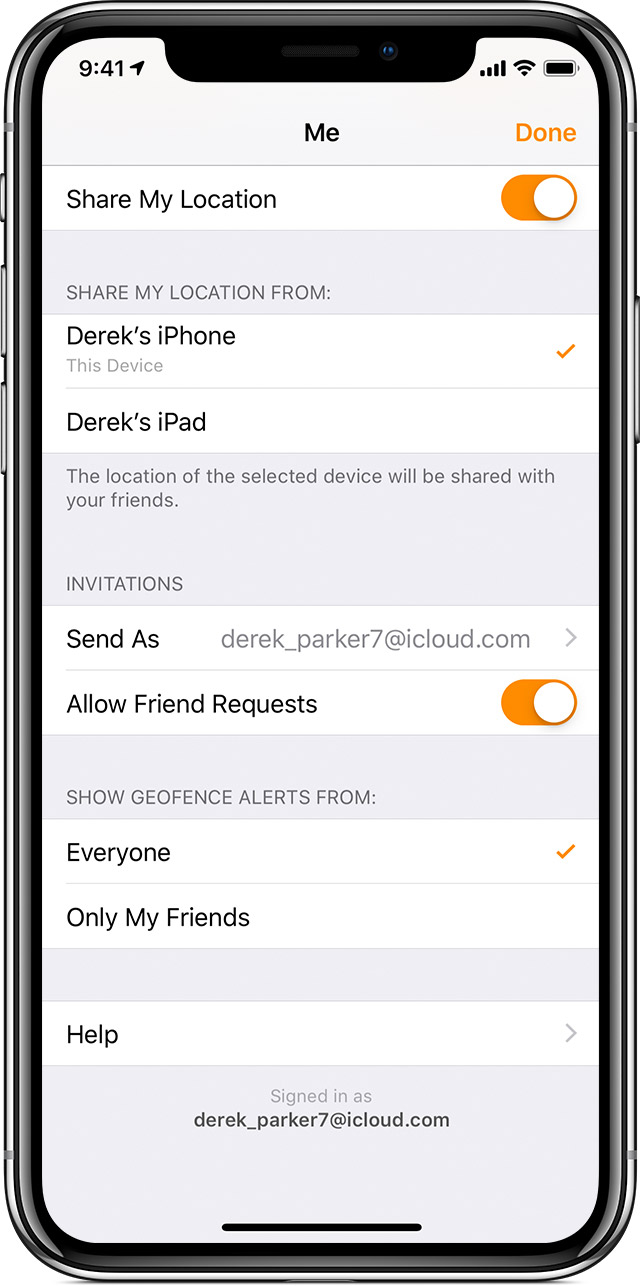

- FIND FRIENDS ON MAC OSX INSTALL
- FIND FRIENDS ON MAC OSX MANUAL
- FIND FRIENDS ON MAC OSX SOFTWARE
- FIND FRIENDS ON MAC OSX CODE
This points to an executable in the /macOS Install Data folder that could be replaced by malicious code. Library/Application Support/Wireshark/ChmodBPF/ChmodBPFĮven Apple itself uses a LaunchDaemon that isn’t always cleaned up immediately such as For example, the popular networking program Wireshark uses a LaunchDaemon,
FIND FRIENDS ON MAC OSX CODE
Some legitimate LaunchDaemons point to unsigned code that could itself be replaced by something malicious. As with System LaunchAgents, the System LaunchDaemons are protected by SIP so the primary location to monitor is /Library/LaunchDaemons.ĭon’t just assume labels you recognize are benign either.
FIND FRIENDS ON MAC OSX SOFTWARE
In this image, the computer has been infected by 3 separate, malicious LaunchDaemons.īecause LaunchDaemons run on startup and for every user even before a user logs in, it is essential that your security software is aware of what daemons are running and when any new daemons are written. However, since most Mac users are also admin users and habitually provide authorisation for software to install components whenever asked, the bar is not all that high and is regularly cleared by infections we see in the wild. The bar is raised for attackers as writing a daemon to /Library/LaunchDaemons requires administrator level privileges. LaunchDaemons only exist at the computer and system level, and technically are reserved for persistent code that does not interact with the user – perfect for malware. The threat is autonomously blocked and the IT team is alerted to the IOCs, with reference to Mitre Att&ck framework, and convenient links to RecordedFuture and VirusTotal detections.
FIND FRIENDS ON MAC OSX MANUAL
Users can unhide this library in a couple of different ways for manual checks, but enterprise security solutions should monitor the contents of this folder and block or alert on malicious processes that write to this location, as shown here in this example from the SentinelOne console. Unfortunately, Apple took the controversial step of hiding the parent Library folder from users by default all the way back in OSX 10.7 Lion, making it easier for threat actors to hide these agents from unsavvy users. Since user LaunchAgents require no privileges to install, these are by far the easiest and most common form of persistence seen in the wild.

LaunchAgents take the form of property list files, which can either specify a file to execute or can contain their own commands to execute directly. However, since this folder is now managed by macOS itself (since 10.11), malware is locked out of this location by default so long as System Integrity Protection has not been disabled or bypassed. There is also a LaunchAgents folder reserved for the System’s own use. In addition, a LaunchAgents folder exists at the computer level which can run code for all users that log in. Each user on a Mac can have a LaunchAgents folder in their own Library folder to specify code that should be run every time that user logs in. Has your IT team and security solution got them all covered? Let’s take a look.īy far the most common way malware persists on macOS is via a LaunchAgent. In this post, we review macOS malware persistence techniques seen in the wild as well as highlighting other persistence mechanisms attackers could use if defenders leave the door open.
On Apple’s macOS platform, attackers have a number of different ways to persist from one login or reboot to another. Whether it’s a cryptominer looking for low-risk money-making opportunities, adware hijacking browser sessions to inject unwanted search results, or malware designed to spy on a user, steal data or traverse an enterprise network, there’s one thing all threats have in common: the need for a persistent presence on the endpoint.


 0 kommentar(er)
0 kommentar(er)
